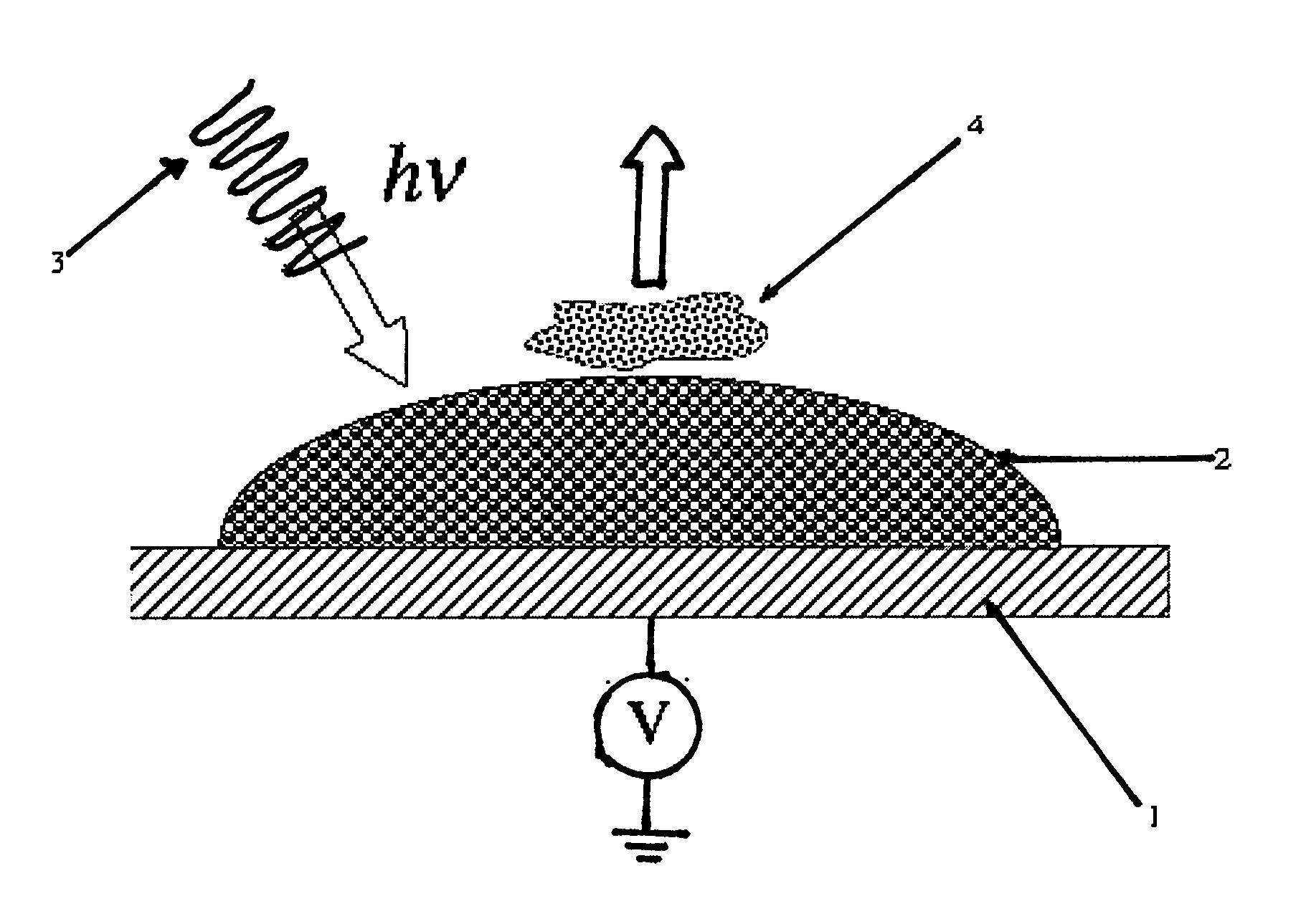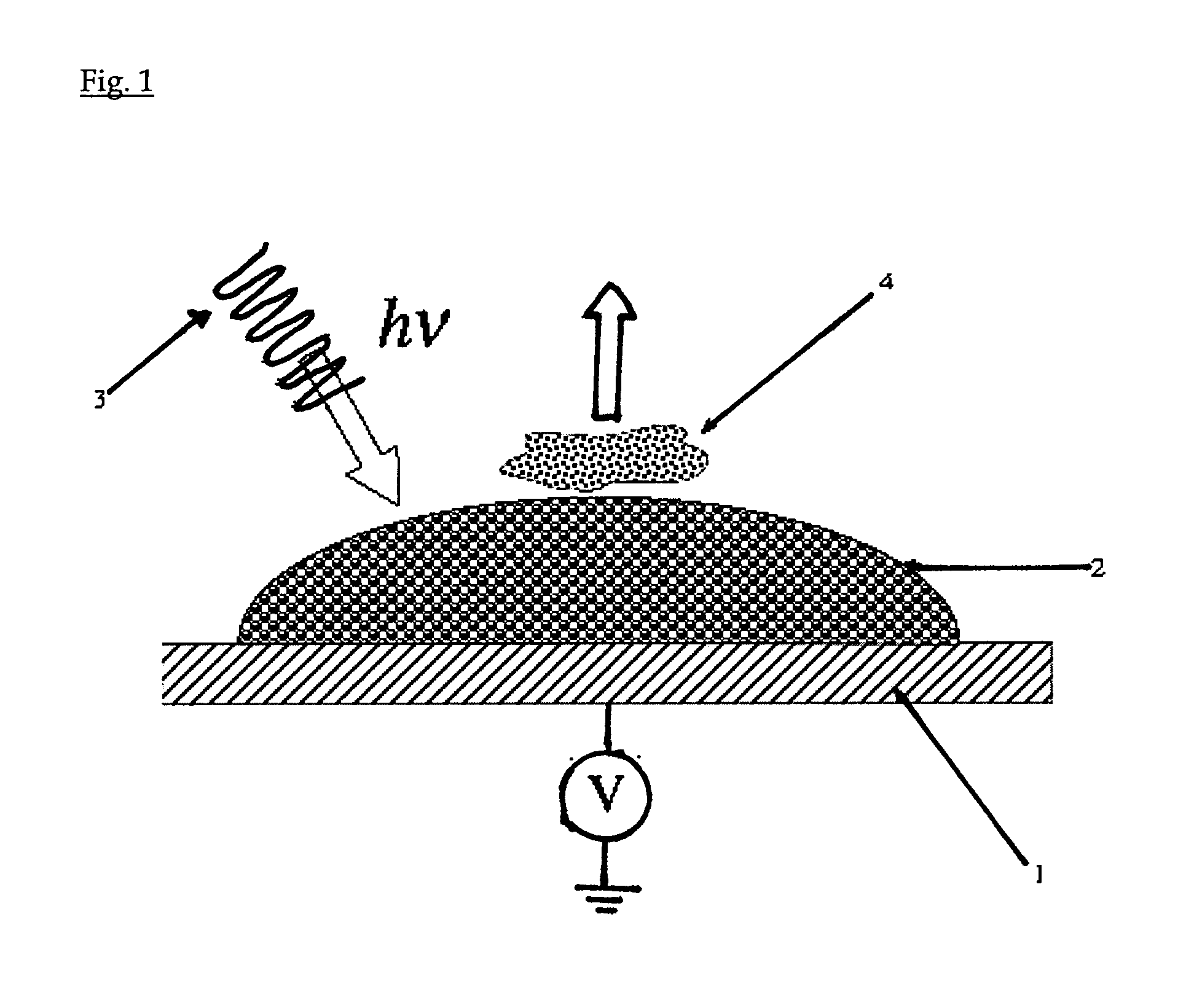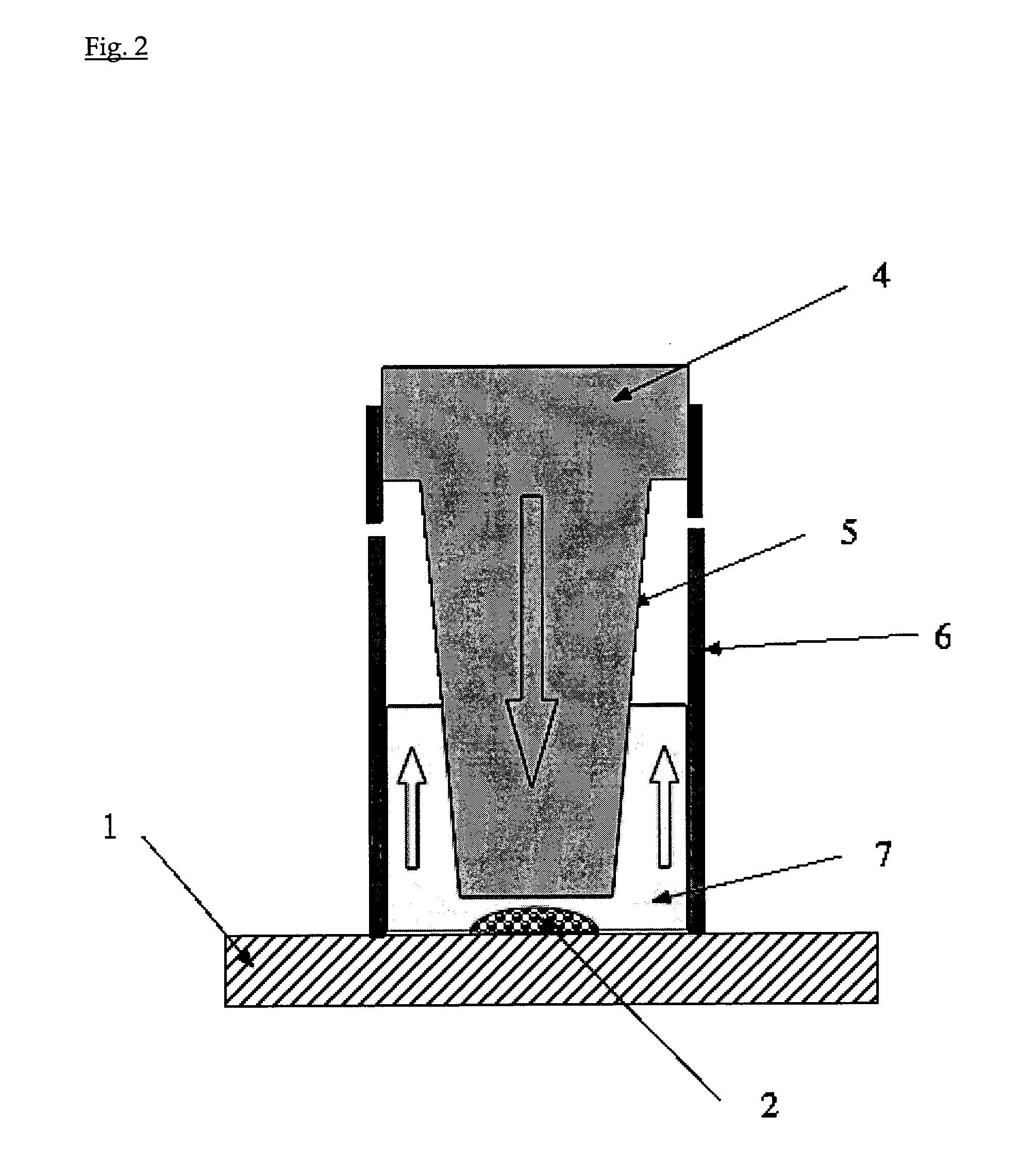Solid Phase Extraction and Ionization Device
a technology of solid phase extraction and ionization device, which is applied in the direction of instruments, nuclear engineering, transportation and packaging, etc., to achieve the effect of high sorbing capacity
- Summary
- Abstract
- Description
- Claims
- Application Information
AI Technical Summary
Benefits of technology
Problems solved by technology
Method used
Image
Examples
example 1
Phosphopeptide Sorption and Ionization from Sintered TiO2 Nanoparticles
TiO2 Spot Preparation
[0042]A stainless steel plate is used as a substrate. A 0.4% (0.1%-1.0%) suspension of commercially available TiO2 nanoparticles (Degussa P25) in water is prepared. Drops of the suspension are applied as a layer or an array of spots (˜2 μL) on a stainless steel plate. The drops are first allowed to dry, and then the plate is heated at 400° C. for one hour to form a spot of nanoparticles adhering to the substrate. The temperature and the duration of the sintering process depend on the nature and the size of the nanoparticles. The sintered nanoparticles are then cooled down to room temperature. The suspension can also be screen-printed directly on the metal plate.
[0043]Peptides are obtained by protein proteolysis. Proteins, including β-casein, protein mixture of β-casein and bovine serum albumine (BSA), milk samples, are digested with trypsin in 25 mM ammonium bicarbonate...
example 2
Cysteinyl Peptide Tagging Using Photo-Oxidation of Redox Tags
[0054]The TiO2 spot preparation is similar to that of example 1.
[0055]A single cysteine-containing peptide (SSDQFRPDDCT) has been used as a model peptide. The peptide was diluted in water and kept as a stock solution. Before each experiment, aliquots were mixed respectively with DHB, MOHQ and HQ. The peptide concentration in the mixture was 5 ng / μl, i.e a concentration of 4 μM. The molar ratio peptide to redox tags was 1:1. 0.4 μL of the mixture solution was deposited on the sintered nanoparticle spots. The spot area was about 7 mm2. The sample / redox mixture was left to dry for 10 min in the dark to avoid spurious redox reactions, and then covered by an overlayer of CHCA dissolved in a solution of acetonitrile 50% / water 50% and left to dry for 5 min.
[0056]The mass spectra were obtained with an Applied Biosystems 4700 Proteomics Analyzer having a laser wavelength of 355 nm in positive reflector mode.
Oxidative Tagging Result...
example 3
Photo-Induced Peptide in-Source Decay
[0061]The TiO2 spot preparation is similar to that of example 1.
[0062]Angiotensin I and oxidized bovine insulin β-chain have been employed as model peptides. The peptides were diluted in water and kept as a stock solution with a concentration of 70 μM and 7 μM respectively. 1 μL of the solution was deposited on the sintered nanoparticle spots. The solution was left to dry for 10 min in ambient condition, and then covered by an overlayer of glucose dissolved in a solution of water (10 mg / ml) and left to dry for 5 min.
[0063]The mass spectra were obtained with a Bruker Microflex having a laser wavelength of 337 nm in both positive and negative reflector modes.
Photo-Induced Peptide in-Source Decay Results as in Example 3
[0064]In source decay is a fragmentation process occurring in the ion source rapidly after the laser shot. Being coupled with MALDI-TOF MS, it provides a useful method for sequencing peptides and proteins. Compared with the convention...
PUM
| Property | Measurement | Unit |
|---|---|---|
| mean radius | aaaaa | aaaaa |
| mean radius | aaaaa | aaaaa |
| surface area | aaaaa | aaaaa |
Abstract
Description
Claims
Application Information
 Login to View More
Login to View More - R&D
- Intellectual Property
- Life Sciences
- Materials
- Tech Scout
- Unparalleled Data Quality
- Higher Quality Content
- 60% Fewer Hallucinations
Browse by: Latest US Patents, China's latest patents, Technical Efficacy Thesaurus, Application Domain, Technology Topic, Popular Technical Reports.
© 2025 PatSnap. All rights reserved.Legal|Privacy policy|Modern Slavery Act Transparency Statement|Sitemap|About US| Contact US: help@patsnap.com



